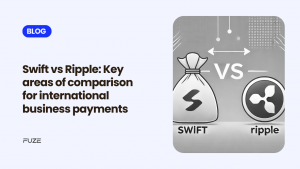Stablecoins have come to be considered the bedrock of the ecosystem in recent years. They make it possible for the digital space to coexist with traditional fiat currencies, using a stable and reliable exchange medium. Currently, stablecoins like USDT and DAI are increasingly employed by individuals as well as institutions alike for trading and cross-border purposes, as a hedge against volatile markets. However, as the market for stablecoins grows, one of the most critical factors influencing their success and adoption is liquidity.
For institutions looking to enter or expand within the stablecoin space, understanding the importance of liquidity is paramount. This guide explores why liquidity matters in stablecoin markets, the factors that affect it, and how institutions can benefit from ensuring liquidity in their stablecoin activities.
What Is Liquidity in Stablecoin Markets?
Liquidity refers to the ease of buying or selling an asset without significantly affecting the price in the market. In the stablecoin markets, liquidity implies the ability to convert stablecoins quickly and efficiently to fiat currencies or other digital assets without significant slippage or price fluctuations.
For example, if an institution wants to buy or sell a large amount of stablecoins, the liquidity of the market determines how smoothly that transaction can occur. High liquidity ensures that these transactions can happen quickly and at predictable prices, while low liquidity might lead to larger price swings and delays.
Why Is Liquidity Important To Stablecoins?
Price Stability
One of the key features of stablecoins is their promise of price stability. They are pegged to a stable asset, such as the US dollar or gold, to maintain a consistent value. However, to uphold this stability, stablecoins must be able to handle high trading volumes without experiencing significant price fluctuations.
High liquidity in stablecoin markets allows for smooth and predictable price discovery. In highly liquid markets, the buying and selling activity is spread across many participants, meaning no single buyer or seller can drastically impact the price. This helps maintain the asset’s value, which is crucial for both individuals and institutions that rely on them for trading and hedging.
Efficient Transactions
Liquidity also impacts the efficiency of transactions. The more liquid a market, the faster and cheaper the transactions are. Institutions have to process transactions very fast, especially when dealing with large volumes of stablecoins. Without sufficient liquidity, the cost of executing transactions can rise, and delays in settlement can occur.
High liquidity ensures that institutions can execute transactions at market prices without waiting for matching buyers or sellers. This is especially important for financial institutions that need to move large sums of money or settle trades in real-time.
Arbitrage Opportunities
Liquidity plays a very important role in arbitrage opportunities within the stablecoin market. Arbitrage refers to the practice of taking advantage of a price discrepancy between two or more exchanges for profit. Higher liquidity allows for more efficient arbitrage, thereby reducing price discrepancies across different platforms.
Institutions can make use of these opportunities since they have access to highly liquid markets. Whether it is cross-border transactions or trading between different exchanges, liquidity ensures that arbitrage can occur smoothly and with minimal slippage.
Market Confidence
Institutions rely on stablecoins to maintain stability in their portfolios and trading strategies. Liquidity in stablecoin markets is essential for building market confidence. When a market is illiquid, there’s a higher risk that participants may not be able to exit or enter positions as planned. This can lead to increased volatility and a lack of trust in the asset.
On the other hand, high liquidity signals to institutions and investors that the market is healthy and that they can trade stablecoins without fear of sudden, unpredictable price changes. This instills confidence and encourages participation in the stablecoin ecosystem.
Reduces Spread Costs
A bid-ask spread is the difference between the price a buyer is willing to pay for an asset (the bid) and the price a seller is willing to accept (the ask). In illiquid markets, this spread tends to be larger, meaning institutions will face higher transaction costs when buying or selling stablecoins.
In a liquid market, the bid-ask spread is more shallow, decreasing the transaction cost for institutions. This can result in significant savings, especially when large volumes of stablecoins are being traded. Liquidity, therefore, directly impacts the cost-effectiveness of stablecoin transactions.
Determinants of Stablecoin Markets Liquidity
Several factors impact the liquidity in the stablecoin markets. The determinants of these include:
Market Depth: It represents the number of buy and sell orders available at various price levels. A deep market has a high number of orders at different prices. This makes large transactions easier without changing the market price. Institutions willing to trade stablecoins must be able to access the market depth to ensure smooth processing of transactions.
Exchange Liquidity: Markets of stablecoins differ with regards to various exchanges. Different stablecoins could be having more or less liquidity depending on the various exchange markets that deal with those coins. Different institutions have to research and figure out which kind of exchanges are good for providing high liquidity on which stablecoins.
Stablecoin Issuance and Redemption Mechanisms: The issuance and redemption process also affects the liquidity of a stablecoin. Fiat currency-backed stablecoins usually have reserve mechanisms through which users can convert their stablecoin back to its equivalent in fiat. A good and efficient redemption procedure increases liquidity as users can always exchange their stablecoins for the equivalent value in fiat.
Market Participation: Liquidity also depends on the number of participants in the market. A greater number of buyers and sellers gives better liquidity since there are multiple orders at various price levels. The large hedge funds or asset managers make an important contribution to increase market participation and thus market liquidity.
Regulatory Environment: The regulatory framework around stablecoins also affects their liquidity. The presence of clear regulations helps instill the much-needed confidence and bring more institutional players into the market. Whereas, uncertainty about regulations can deter participation and hence the entry of players, ultimately reducing liquidity.
How Institutions can ensure Liquidity in Stablecoin Markets
- Interact with Several Liquidity Providers: Ensures liquidity by contacting multiple liquidity providers, including exchange and over-the-counter (OTC) desks. This enables institutions to make use of as many trading opportunities as possible without getting dependent on just one source of liquidity.
- Make use of Algorithmic Trading and Market Making: In addition, algorithmic trading strategies and market-making techniques can be used by institutions to help provide liquidity to the market. Automated Market makers continuously buy and sell stablecoins, ensuring that there are always buy and sell orders available at various price levels. This helps stabilize the market and improve liquidity.
- Monitor Liquidity Metrics: The liquidity metrics, which include bid-ask spreads, market depth, and trading volumes, should be continuously monitored by the institutions. Tracking these indicators enables the institutions to determine the soundness of the market and make informed decisions about when and where to trade stablecoins.
- Work with Regulatory Bodies: Institutions should work closely with regulators to ensure that their stablecoin activities are compliant with local laws and regulations. A strong regulatory framework can increase investor confidence and drive greater participation in stablecoin markets, which, in turn, enhances liquidity.
Conclusion
Liquidity is an essential factor for the success of stablecoin markets, particularly for institutions looking to integrate stablecoins into their trading strategies or financial services. By ensuring that stablecoins are highly liquid, institutions can benefit from price stability, reduced transaction costs, and enhanced market confidence.
Disclaimer: Virtual assets carry significant risks, including high volatility and potential loss of your entire investment. They are not backed by governmental protections, and recourse may be limited in case of loss. Always assess your risk tolerance, fully understand the risks, and seek independent financial advice if needed before investing.
Frequently Asked Questions
1. How can high liquidity benefit institutions using stablecoins?
High liquidity enables institutions to perform large, seamless trades with lower transaction costs, making it easier to manage large positions.
2. What factors contribute to liquidity in stablecoin markets?
Market depth, active participants, trading volume, and liquidity providers (e.g., exchanges, OTC desks) all contribute to market liquidity.
3. How do exchanges contribute to liquidity in stablecoin markets?
Exchanges provide platforms for trading stablecoins and enhance liquidity by facilitating a high volume of trades with many participants.
4. What is market-making, and how does it impact liquidity?
Market-making involves providing buy and sell orders to enhance liquidity, ensuring there are always available trades and reducing transaction costs.
5. How can institutions ensure sufficient liquidity for their stablecoin operations?
Institutions can engage with multiple liquidity providers, use market-making strategies, and monitor liquidity metrics to ensure smooth transactions.







